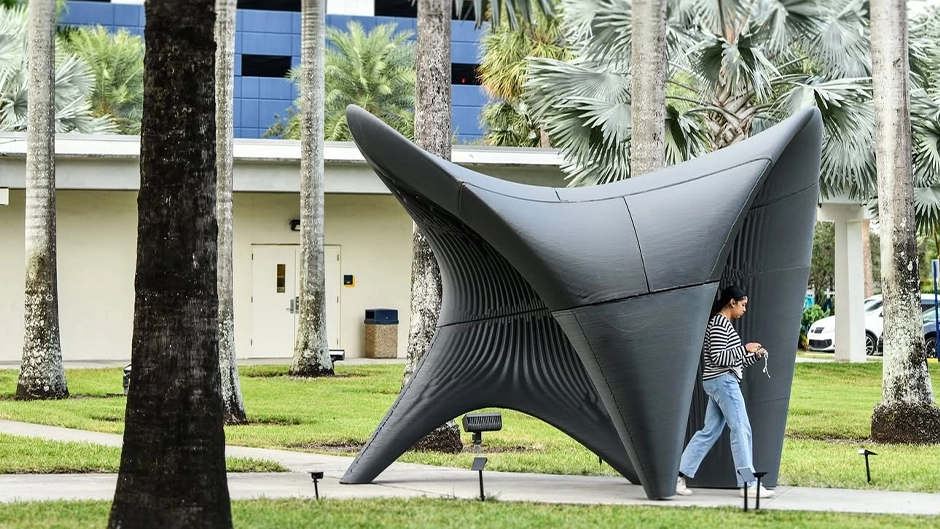The 2025 ACADIA Conference, "Computing for Resilience," was held in Miami and hosted by the University of Miami School of Architecture and the Florida International University Department of Architecture. Workshops were held at U-SoA and FIU from Nov. 3–5, and the main conference took place at FIU from Nov. 6–8. This year marked the 45th annual conference of the Association for Computer Aided Design in Architecture.
ACADIA is an international network of digital design researchers and professionals. The organization facilitates critical investigations into the role of computation in architecture, planning, and building science, encouraging innovation in design creativity, sustainability, and education. ACADIA hosts a yearly conference that travels across universities throughout North America.
Miami's shifting landscapes, influx of technology, and uncertain futures provided a backdrop for the conference theme of "Computing for Resilience," which aimed to frame questions about computation's role in the future of the built environment. The region has seen rapid innovation in building technology, from the development of 3D-printed concrete infrastructure, to the first cross-laminated timber residence in South Florida, and multifamily structures built from recycled blocks. The University of Miami and Florida International University have invested in this type of research infrastructure, enabling studies that can drive innovation in the built environment.
"The conference generated an incredible amount of optimism toward the large questions that we face as architects and stewards of the built environment. From more than 325 submissions, the conference showcased approximately 100 papers, projects, and field notes that show what leading academics, practitioners, and industry partners are working on at the forefront of design and material technology. It brought together fruitful partnerships that will extend beyond the life of the conference, including between the two local host institutions. And lastly, from our faculty involvement throughout the conference proceedings, workshops, and panels, it demonstrates the University of Miami School of Architecture's commitment and leadership in developing a more resilient future for the built environment," said Max Jarosz, research assistant professor, site co-chair, and lead organizer for the University of Miami.
The University of Miami hosted two workshops for the conference: Cognitive Robotic Fabrication, led by Karl Singline, Emmanuel Gollog, and Johannes Braumann, and the Bod2 Be Wild workshop, led by Joaquin Tobar Martinez. The Cognitive Robotic Fabrication workshop investigated how 3D scanning and AI could empower robotic systems to scan their environments in real time and assemble structures from building components in situ. The Bod2 Be Wild workshop focused on full-scale concrete 3D printing, with students gaining hands-on experience with the COBOD Bod2 3D printer. Students learned the processes of mixing mortar-based material, designing for printing, and producing furniture pieces that tested the limits of 3D-printed concrete.

A key theme of the conference was the importance of industry and academic partnerships, which are critical to the future of the built environment. One of the major successes of the conference was the development of a full-scale 3D-printed pavilion, Dual, designed by Samuele Sordi and Pininfarina, and fabricated by Additive Alpha. The pavilion investigated computational design strategies to optimize its overall form in response to 3D-printing fabrication requirements and tested a new 3D-printing material that uses recycled tire content within the filament to create an upcycled material stream. The resulting pavilion, measuring approximately 15 by 15 by 15 feet, demonstrated the speed at which the technology is scaling from desktop printing to building-scale applications.
Together, the University of Miami and Florida International University demonstrated how deeply Miami's academic and industry communities are investing in computational design as a driver of resilience. The 2025 ACADIA Conference made clear that advancements in digital fabrication, material innovation, and collaborative research are no longer speculative — they are actively shaping the region's future. By convening leading scholars, practitioners, and students around urgent questions of climate, technology, and design, this year's conference positioned Miami as a proving ground for the next generation of resilient, computation-driven architecture.






